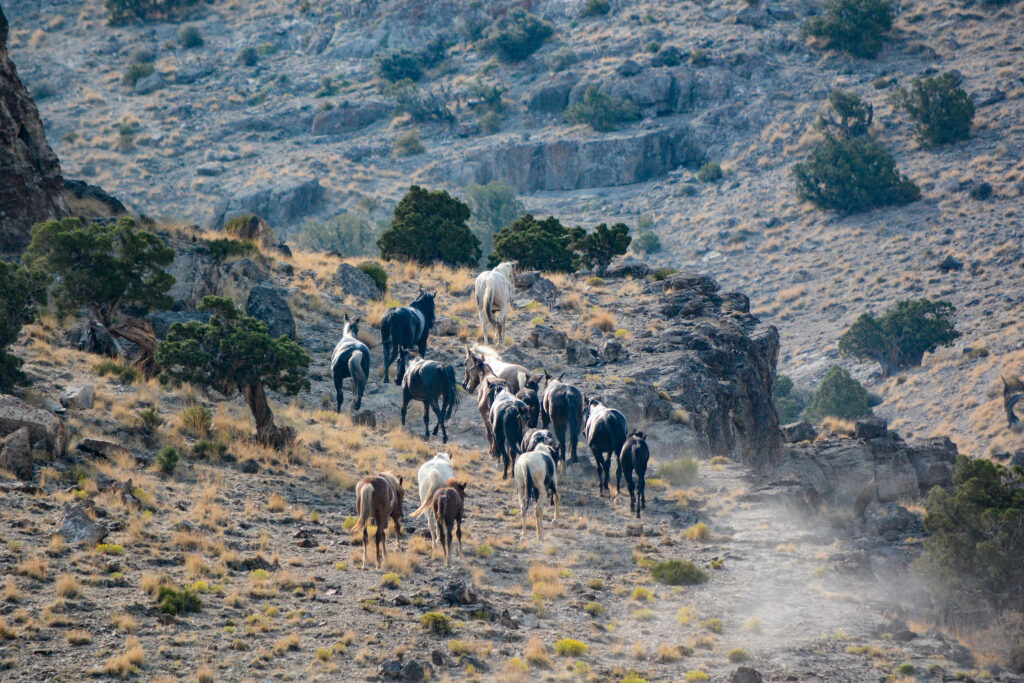
This article was originally published in Deseret News.
Wild horses, the majestic and highly intelligent animals that have become iconic symbols of the American west, are suffering. With numbers doubling every four years, a population crisis is spiraling out of control and resulting in tens of thousands of horses enduring starvation, extreme thirst, disease, and death.
Despite the horrific conditions, a recent lawsuit and new legislation before Congress call for the elimination of a successful, humane program that incentivizes citizens to adopt wild horses and provide safe, healthy homes. Eliminating this program would only perpetuate the crisis.
A step backward would be heartbreaking at a time when we need to do more. The Bureau of Land Management (BLM) estimates 82,000 wild horses and burros endure horrendous struggles to survive on a landscape that can only sustain roughly 27,000 of them. This overabundance, coupled with severe drought across the West, has created gruesome conditions. Horses are malnourished with their ribs and hip bones protruding. In one particularly appalling example in 2018, nearly 200 wild horses died on the Navajo Nation in a desperate search for water when they got caught in mud and were too weak to escape.
To make matters worse, the wild horse and burro overpopulation crisis is also detrimental to other wildlife. Greater sage-grouse populations could decline by more than 70% in the next 12 years within areas occupied by wild horses. Lahontan cutthroat trout, a fish federally protected under the Endangered Species Act, are further jeopardized by wild horse herds in Nevada that overuse and destroy small mountain streams where the trout live. Other native species, including elk and pronghorn, are also caught in the crosshairs and are crowded out of forage and water by wild horses and burros.
To humanely reduce wild horse populations, the BLM regularly relocates horses to off-range facilities. Nearly 64,000 animals are currently held in these locations, costing taxpayers more than $72 million—nearly 65% of the total Wild Horse and Burro Program budget—last year.
No one wants to see animals move off rangelands into crowded holding facilities. The Adoption Incentive Program is a successful tool that helps horses find safe and loving homes. Adopters are given $1,000 to help cover costs such as food, training, or veterinary care. More than 8,250 wild horses and burros have been adopted through the program since its implementation in 2019. This has saved taxpayers about $200 million—money that can instead go to needed fertility control treatments, humane adoption conditions enforcement, and rangeland ecosystems restoration.
Opponents say the Adoption Incentive Program has led to animals ending up in slaughter sales, but the BLM has found no concrete proof supporting the claims. In fact, ensuring animal welfare is a core requirement. Adopters sign a contract confirming they will not knowingly sell or transfer ownership of the adopted animals to any person or organization that intends to process or slaughter the animal. They don’t receive payment or title to the animal until they provide a full year of care and pass various welfare checks. Similar approaches—such as covering medical costs or waiving adoption fees—have been successful for increasing dog adoptions. The BLM is also increasing enforcement to ensure adopters do not violate their contracts to care for the horses and never sell them for slaughter.
We can’t adopt our way out of the wild horse crisis, but continuing the program while improving enforcement is a far better solution than leaving animals to suffer on deteriorating rangelands. We have to do better for these magnificent animals, and promoting adoptions is the humane place to start.



